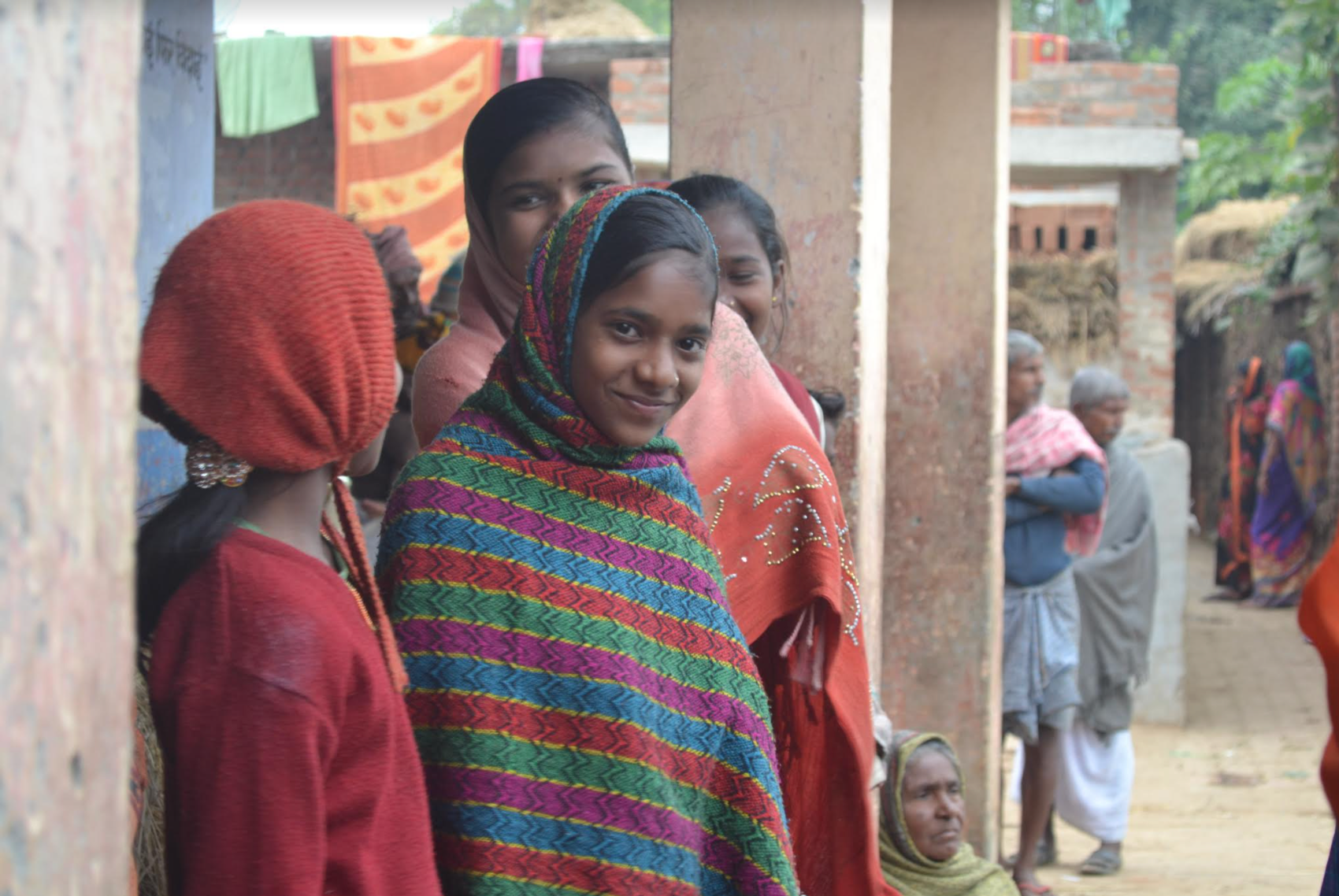Sushmita Mukherjee of Project Concern International, India explores the topic of child marriage in relation to the COVID-19 pandemic.
“My husband travels whole day to sell sarees (dress worn by Indian women) to earn for the family. Now due to lockdown, the business got halted. During the un-locked phase as well, people are buying fewer dresses and thus he is not earning a good income. We do not know how I will feed my family. We have two more children to feed. Hence, my husband decided that it’s better to marry off the elder daughter now. The future is unclear, and I don’t know if we would ever be able to live like earlier,” said one mother about her husband’s decision to marry off their eldest daughter who is just 16 years old.
Child and forced marriage gained tremendous pace, in India as the country went into lockdown to try and arrest the spread of COVID-19 in 2020 and 2021. India has a child marriage prevention law – Prohibition of child marriage act 2006 – which is based on the old Child marriage restraint act of 1929. The earlier law, which was implemented by the British in colonial India, severely punished any adult who married an underage girl and punished the parents who encouraged such marriages. The amended law came in with stringent punishments for all the stakeholders party to any event of an underage marriage, especially of girls. Prohibition officers have been created by the law to offer girls support. Despite all of this, marriages keep happening in rural areas.
We know that during the last year, the administration has been engaged in COVID-19 management, resulting in mang government services being non-responsive and inaccessible for those who need them. Social development actors, including non-governmental organizations, raised their voices to seek government’s attention. But government does not have an adequate system in place to record marriages whether child/early/forced or take relevant actions. During its September 2020 parliamentary session the government reported that as per National Crime Records Bureau (NCRB) there is no data on child marriage in the country. Earlier this year, on the occasion of International Women’s Day UN agencies shared evidence of the risk of an additional ten million adolescent girls being married off before the end of the decade in India.
As part of Project Concern International India’s Umang Project we tele-interviewed 45-woman volunteers and 70 mothers from the rural areas in Jharkhand to understand the status of adolescent girls in April 2020 and April 2021 respectively.
April 2020 interviews informed us that mothers were somehow resisting new matches being fixed for their adolescent daughters. However, the pressure and risk kept increasing, as families were losing their savings and wanted to ensure that savings for dowry were not depleted. Cancelation of marriage is considered to be negative, hence parents ensured all those marriages are solemnized which were under discussion with groom’s family and those which had been fixed. Incidences of sexual abuse of girls during the crisis did not decrease. Girls continued to face situations of rape or incest. Hence, marriage continued to be an option for parents.
One of the mothers mentioned, “We are now eating up the savings we had kept for our daughter’s marriage. We cannot now think of earning again to save for her marriage. Soon we get a match, will get Rekha (daughter) married earliest without any hesitation. There is no way we can wait.”
After a year when many were thinking about restarting their lives the second wave of COVID-19 hit India. The pandemic reached rural areas and silently devastated families who had no support in terms of public health, social entitlements, or social solidarity.
The unpredictable nature of the pandemic resulted in parents taking severe regressive decisions. Girls are missing their second academic session and parents have lost hope that their girls will get educated or gain any sort of career opportunities. Foreseeing the deteriorating fortunes of their families, marrying off their adolescent daughters has become a viable option. Girls who are 16-18 years old are at highest risk of getting married. The requirement that weddings have limited numbers of guests and as a result incur fewer expenses is also prompting parents to arrange weddings now.
One of the PCI team members shared, “I have got to know that five girls have been married off in April this year from one village only. These girls were unable to continue their education due to lockdown and had no access to online education. Hence, parents chose to marry them off. Due to COVID restrictions, marriages are being organized in low cost and no-frills ways. Even mothers are showing their helplessness to stop their daughters being married before 18 years of legal age”.
This pandemic has failed not only these girls but also their parents and many others who had started walking on the path to enable girls to aspire a better life, pursue higher education and plan a career towards economic independence. The job market has rapidly shrunk.
One of the mothers opined that, “Job opportunities for girls are closed now. With the shrinking economic space, it’s better for boys to compete there and let girls again go back and take care of domestic responsibilities. Local role models of front-line workers are not able to create an enabling environment, as the recruiters prefer married women to these positions. There is no gain in allowing daughters to roam around in the house. It’s better to get her married soon.”
Loss of parents is adding to this crisis, particularly when mothers die as they are often friends and supportive of their daughters. Left alone fathers have more autonomy to make the decision to marry off their daughters.
Going through such traumatic stories during the conversations with women and girls, one of the PCI team members expressed, “For how many more years, girls would be treated a burden of the family and would be silently bearing this pain?”
Key takeaways:
- Enhancing the value of girl children is crucial and non-negotiable. All stakeholders (public and private) need to ensure that their plans, projects, schemes, policies, investment should have an equal space and opportunity for girls.
- Comprehensive and coordinated, multi-sectoral engagement is needed to re-start the journey on the empowerment continuum, starting from education and knowledge generation.
- Enhanced access to protection schemes and platforms for women and girls is needed.
- Create awareness about laws and schemes that support women and girls and encourage the use of these schemes by improving accessibility
- Government should undertake a head count of all adolescent girls matching their census data to ascertain the volume girls who have married early. Quality data will help to design appropriate strategies to mitigate the vulnerabilities of girls.
- Strategize to connect ‘last mile’ girls with education facilities; so that no one is left out. Provide free internet services and provide digital devices to enable access and engagement.
- Encourage girls into higher education with scholarships so that further education does not burden their families.
- Create gender equitable, job market and skills development opportunities.
- Women’s collectives should be engaged intensively to generate more public/community discussions on issues of adolescents and possible mitigation plans.
- We need to focus on more rigorous data and research to understand the impact of marriage on the lives of adolescents.
The responses and opinions of mothers in this research, give us an opportunity to understand how badly the crisis is devastating the lives of adolescent girls and their families. We need to focus on creating a new pathway for empowerment to build back better – a new normal – a gender egalitarian society, with no inequities.






